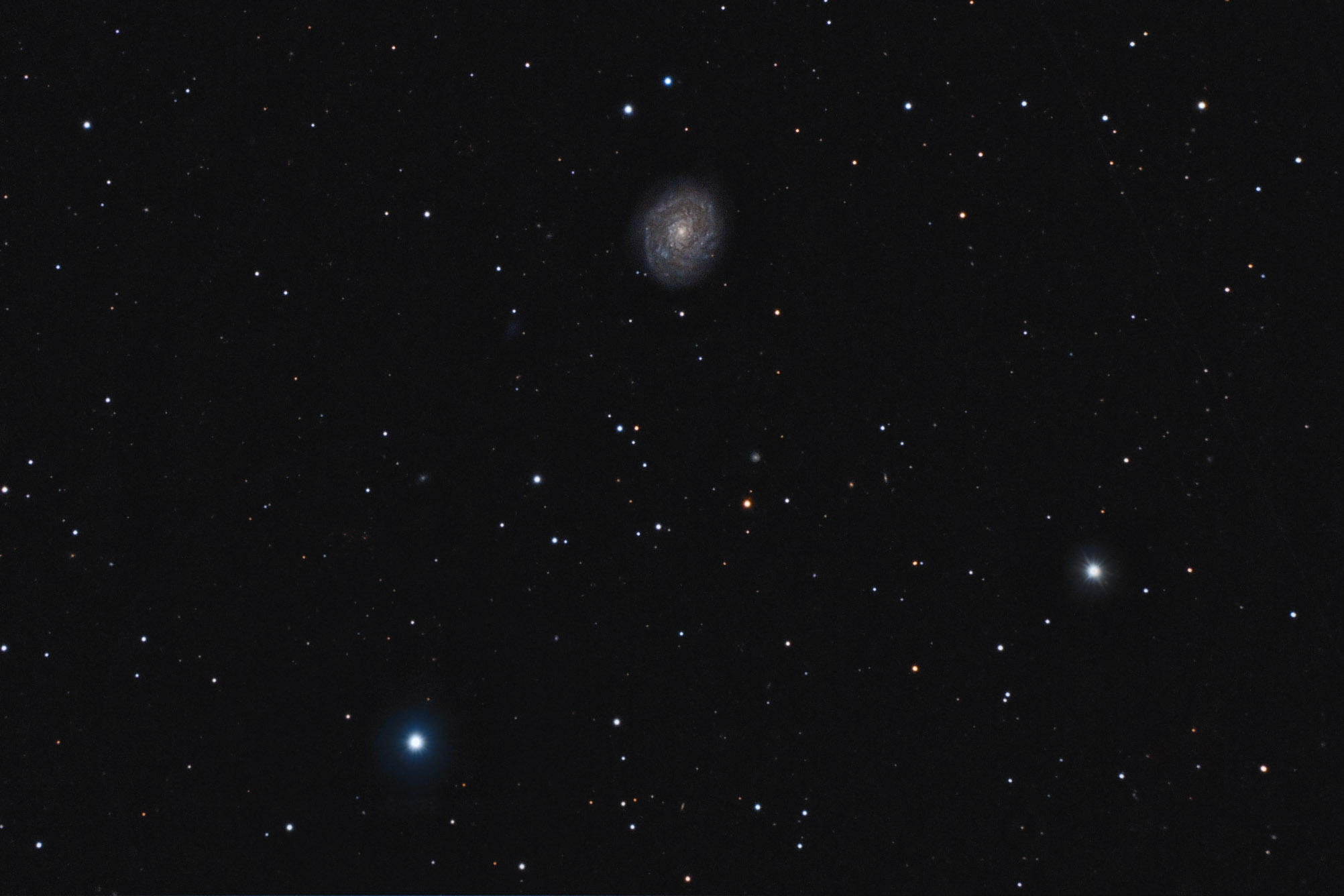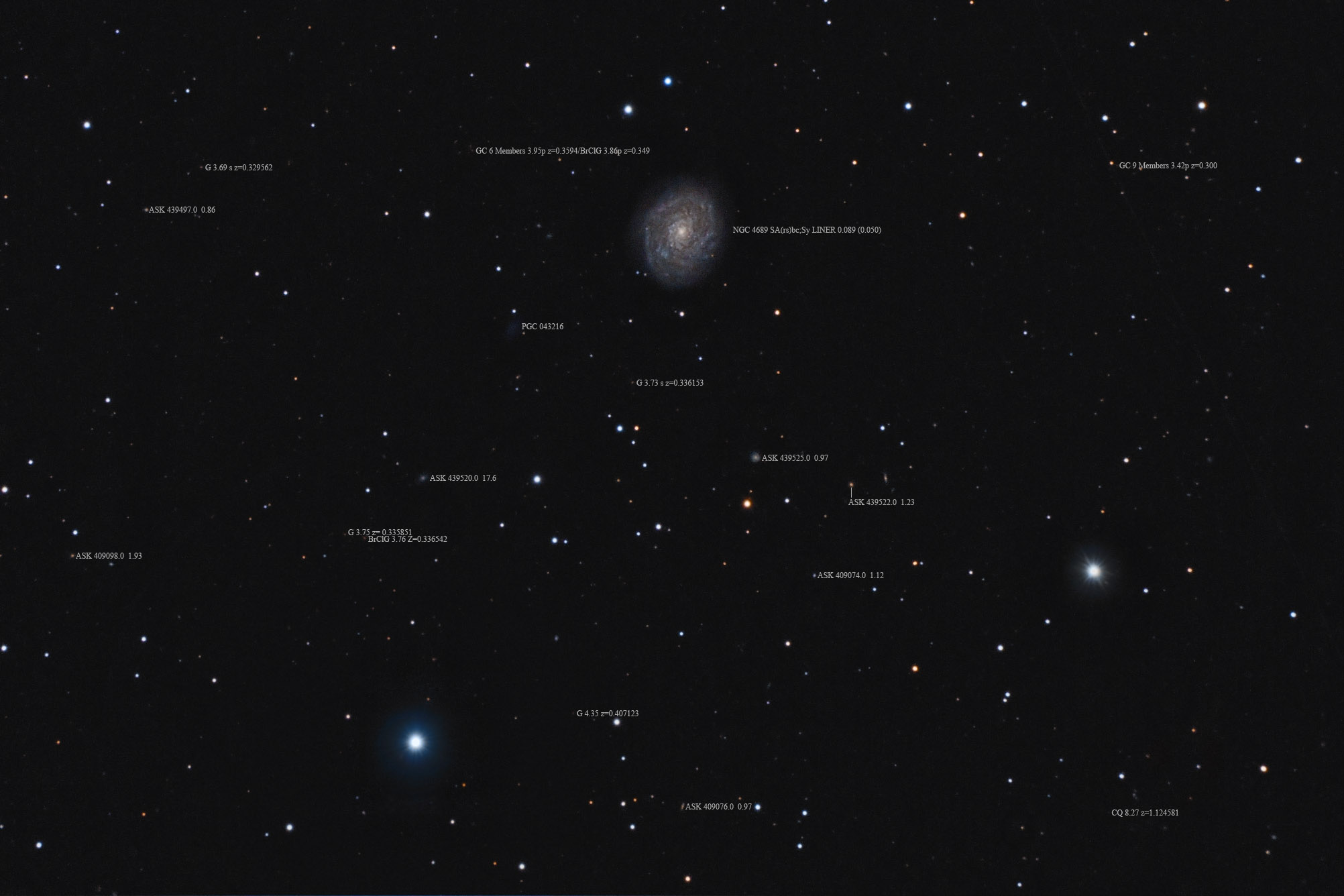Object name: NGC4689 NGC 4689 is a rather lonely galaxy in southern Coma Berenices. It may appear to have a very low surface brightness but that is due more to conditions. I took this on a night that started out great for the first luminance frame then fog rolled in but I'd gone to bed so didn't notice. Cloud sensor decided it wasn't too bad and let it go. The result is the very bright stars put a huge fog across much of the image costing me several magnitudes. This is why so little is seen in the background. It was wiped out by the fog. I needed to retake it but by the time I saw how bad conditions were it was too far west. Maybe next year. I did find bringing out detail difficult. It took a lot of work. I put it down to the fog. Then I looked at the Sloan image. http://skyservice.pha.jhu.edu/DR9/ImgCutout/getjpeg.aspx?ra=191.94&dec=13.76278&scale=0.792254&width=800&height=800&opt=&query=
it showed a very fuzzy image. Mine started to look much better though the fog cost me the faint outer parts of the galaxy seen in the Sloan image as well as in the one lone amateur image of it I found. Then I was reading notes on it at NED and this one said it perfectly. "Upon inspecting this image on this plate, one viewer commented, 'When man creates a sharper telescope, God will create a fuzzier object.'"
It was discovered by William Herschel on April 12, 1784 and is in the original H400 observing program. As I saw all in that with my 6" f/4 it can't be all that low surface brightness. Besides I was working under similar condition over 30 years ago when I logged it. My entry from my observation with the 10" f/5 on April 23, 1985 at 50x reads: "Rather oval splotch of a galaxy near two bright field stars. It seems 3.5x2.5 to my eye, somewhat smaller than shown in the guide. It's a very faint galaxy on an increasingly foggy (ground fog) night." Most cite its size at 4.3x3.5 minutes in size but I get only 3x2.5 minutes through the fog. Smaller than my visual estimate. Obviously, one to be revisited but that is unlikely to happen.
I had to put the galaxy high in the field because of the 6th magnitude A1V star, 26 Comae Berenices. It was creating ghosts no matter what I did until I moved the field to where I did. That used up a frame or two of fog-free skies, unfortunately. To the southeast of NGC 4689 is PGC 043216, a faint apparent dwarf galaxy. I couldn't find much of anything on it, however. Its relation to NGC 4689 remains a mystery to me.
14" LX200R @ f/10, L=4x10' RGB=2x10', STL-11000XM, Paramount ME Related Designation(s):2MASS J12474555+1345460, 2MASX J12474552+1345456, 2MASXi J1247455+134545, 2MASXi J1247456+134545, AKARI J1247454+134544, ALFALFA 1-407, ASK 439521.0, CGCG 071-043, CGCG 1245.3+1402, EVCC 1166, FAUST 3473, FAUST V187, HDCE 0732 NED001, HIPASS J1247+13, IRAS 12452+1402, IRAS F12452+1402, LDCE 0904 NED248, LGG 289:[G93] 052, MCG +02-33-022, NGC 4689, NGC4689, NSA 169951, PGC 043186, SDSS J124745.56+134546.1, UGC 07965, UZC J124745.7+134545, VCC 2058, [BEC2010] HRS 254, [M98j] 174 NED209, [MHH96] J124747+134603, | | 

